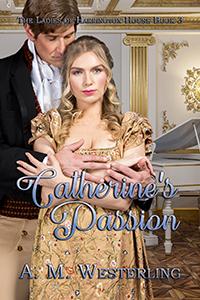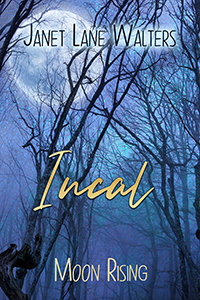To learn more about Rosemary please click on the image above.
I am a fan of well written historical fiction
which recreates past times. After I read Baroness Orczy’s novels about her
gallant hero, the scarlet pimpernel, I became curious about the author’s life
and times.
Baroness Orczy
and
The Scarlet Pimpernel Fiction
and Fact
“They
seek him here, they seek him there,
Those
French men seek him everywhere.
Is
he in Heaven? – Is he in hell?
That
damned annoying Pimpernel.”
The Scarlet Pimpernel, Baroness Orczy’s most famous character, is
Percy, the gallant daredevil, Sir Percival Blakeney Bart. He is the hero of her novels and short
stories set in The French Revolution, so aptly nick-named The Reign of
Terror.
Orczy was a royalist with no sympathy for the merciless Jacobins who
spared no efforts to achieve their political ambitions. Historical accounts prove everyone in France
was at risk of being arrested and sent to the guillotine. Orczy’s works of fiction about the Scarlet
Pimpernel display her detailed knowledge about Revolutionary France and capture
the miserable atmosphere which prevailed in that era.
When writing about her novel The
Laughing Cavalier, Percy’s ancestor, Orczy
described Percival’s “sunny disposition, irresistible laughter, a
careless insouciance and adventurous spirit”.
As I mentioned in my previous article in Baroness Orczy, in Vintage
Script, Percy revealed himself to Orczy while she was waiting for a train
at an underground station. She saw him
dressed in exquisite clothes that marked him as a late eighteenth century
gentleman, noted the monocle he held up in his slender hand and heard both his
lazy drawl and quaint laugh. Inspired by
their meeting she wrote The Scarlet Pimpernel in five weeks.
On the second of August 1792, Percy founded his gallant League of
Gentlemen composed of nine members. When
ten more members enrolled in January 1793 there was “one to command and
nineteen to obey.” Percy and his league saved innocents from the French
Revolutionary Government’s tool, Madame Guillotine.
London society speculated about the identity of The Scarlet
Pimpernel but, with the possible
exception of the Prince Regent, only the members of Percy’s league knew his
true identity.
Percy, a man of wealth and
influence well-acquainted with the Prince Regent, heir to the throne, married
Marguerite St. Just, a French actress.
Until Percy discovered Marguerite was responsible for an aristocratic
family’s death, he was an adoring husband.
Percy kept his alias, The Scarlet Pimpernel secret from Marguerite for fear
she would betray him. Still loving
Marguerite despite her crime, he feigned indifference, treated her coldly,
shunned her company and acted the part of a fool so successfully that he bored
her. However, Marguerite discovered the
truth about Percy and saved his life.
After the romantic couple’s reconciliation, Marguerite is mentioned as a
member of the league in Mam’zelle Guillotine.
At the beginning of each of Orczy’s novels about The Scarlet
Pimpernel and his league, the current events of the French Revolution are
summarised. Thus, Orczy weaves fiction
and face by not only featuring English and French historical figures such as
Robespierre, d’Herbois, The Prince of Wales, and Sir William Pitt, the younger,
but by making use of historical events.
For example, in Eldorado Orczy
describes the Dauphin in the care of the brutal shoemaker, Simon, who teaches
the prince to curse God and his parents.
Amid horror, Orczy uses romance and heroism to defeat evil, as she
did as a child when playing the part of a fearless prince while her sister
acted the part of a damsel in distress.
Orczy spent 1900 in Paris that, in her ears, echoed with the horrors
of the French Revolution. Surely, she
had found the setting for her magnificent hero The Scarlet Pimpernel, who would champion the victims of The
Terror. But why did she choose such an
insignificant flower for Percy’s alias?
It is not unreasonable to suppose a Parisian royalist organisation’s
triangular cards, which were hand painted with roses that resemble scarlet
pimpernels, fuelled Orczy’s imagination.
Further fuel might have been added by a man called Louis Bayard, a
young man with similarities to the real life Scarlet Pimpernel, although he
might not have been motivated by Percy’s idealism
William Wickham, the first British spymaster, engaged the
nineteen-year old Louis Bayard. In the
following years, Louis proved himself to be as elusive as Percy. Like Percy,
Louis had many aliases. Not only did Orczy’s fictional hero and Louis fall in
love with actresses, but both also appeared and disappeared without causing
comment. Real life Louis’s and fictional
Percy’s lives depended on being masters of disguise.
In disguise, Percy fools his archenemy, Citizen Chauvelin, who Orczy
gives the role of official French Ambassador to England. It is an interesting example of her
distortion of historical personalities and incidents for them to feature in her
works of fiction. In fact, it is
doubtful that Bernard-Francois, marquis de Chauvelin ever assumed a false
identity as he did in Orczy’s novel, The Scarlet Pimpernel, about Percy and his
League of Gentlemen, among whom are such fictional but memorable characters
such as Armand St Just, Marguerite’s brother, Sir Andrew Ffoulkes, Lord
Hastings, and Lord Tony Dewhurst.
Another example of Orczy weaving fact and fiction is Louis-Antoine
St Just, a revolutionary, who she describes as Marguerite’s cousin. Louis-Antoine St Just, a young lawyer, was
Maximillian Robespierre’s follower. He supported the punishment of traitors as
well as that of anyone who was a ‘luke-warm’ revolutionary. In The
Triumph of the Scarlet Pimpernel Marguerite’s brother, the fictional,
Armand St Just, meets with Robespierre and other Jacobins. Orczy portrays him as young, fervent, and
articulate as the real life Louis-Antoine St Just.
Throughout the history of publishing countless authors, who became
famous and whose work is still enjoyed as books, films, plays and t.v.
dramatizations, found it difficult to place their work. Orczy’s most famous novel was no
exception. Percy took the leading role
in her play called The Scarlet Pimpernel and
captured the audience’s hearts. Subsequently the novel was published, and Percy
became famous. His fame increased with
each sequel about his daring exploits.
http://bookswelove.net/authors/morris-rosemary
rosemarymorris.co.uk

















































.jpg)



.jpg)


